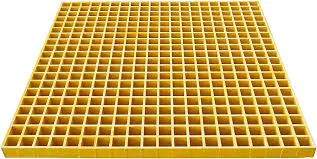
-
 Afrikaans
Afrikaans -
 Albanian
Albanian -
 Amharic
Amharic -
 Arabic
Arabic -
 Armenian
Armenian -
 Azerbaijani
Azerbaijani -
 Basque
Basque -
 Belarusian
Belarusian -
 Bengali
Bengali -
 Bosnian
Bosnian -
 Bulgarian
Bulgarian -
 Catalan
Catalan -
 Cebuano
Cebuano -
 China
China -
 China (Taiwan)
China (Taiwan) -
 Corsican
Corsican -
 Croatian
Croatian -
 Czech
Czech -
 Danish
Danish -
 Dutch
Dutch -
 English
English -
 Esperanto
Esperanto -
 Estonian
Estonian -
 Finnish
Finnish -
 French
French -
 Frisian
Frisian -
 Galician
Galician -
 Georgian
Georgian -
 German
German -
 Greek
Greek -
 Gujarati
Gujarati -
 Haitian Creole
Haitian Creole -
 hausa
hausa -
 hawaiian
hawaiian -
 Hebrew
Hebrew -
 Hindi
Hindi -
 Miao
Miao -
 Hungarian
Hungarian -
 Icelandic
Icelandic -
 igbo
igbo -
 Indonesian
Indonesian -
 irish
irish -
 Italian
Italian -
 Japanese
Japanese -
 Javanese
Javanese -
 Kannada
Kannada -
 kazakh
kazakh -
 Khmer
Khmer -
 Rwandese
Rwandese -
 Korean
Korean -
 Kurdish
Kurdish -
 Kyrgyz
Kyrgyz -
 Lao
Lao -
 Latin
Latin -
 Latvian
Latvian -
 Lithuanian
Lithuanian -
 Luxembourgish
Luxembourgish -
 Macedonian
Macedonian -
 Malgashi
Malgashi -
 Malay
Malay -
 Malayalam
Malayalam -
 Maltese
Maltese -
 Maori
Maori -
 Marathi
Marathi -
 Mongolian
Mongolian -
 Myanmar
Myanmar -
 Nepali
Nepali -
 Norwegian
Norwegian -
 Norwegian
Norwegian -
 Occitan
Occitan -
 Pashto
Pashto -
 Persian
Persian -
 Polish
Polish -
 Portuguese
Portuguese -
 Punjabi
Punjabi -
 Romanian
Romanian -
 Russian
Russian -
 Samoan
Samoan -
 Scottish Gaelic
Scottish Gaelic -
 Serbian
Serbian -
 Sesotho
Sesotho -
 Shona
Shona -
 Sindhi
Sindhi -
 Sinhala
Sinhala -
 Slovak
Slovak -
 Slovenian
Slovenian -
 Somali
Somali -
 Spanish
Spanish -
 Sundanese
Sundanese -
 Swahili
Swahili -
 Swedish
Swedish -
 Tagalog
Tagalog -
 Tajik
Tajik -
 Tamil
Tamil -
 Tatar
Tatar -
 Telugu
Telugu -
 Thai
Thai -
 Turkish
Turkish -
 Turkmen
Turkmen -
 Ukrainian
Ukrainian -
 Urdu
Urdu -
 Uighur
Uighur -
 Uzbek
Uzbek -
 Vietnamese
Vietnamese -
 Welsh
Welsh -
 Bantu
Bantu -
 Yiddish
Yiddish -
 Yoruba
Yoruba -
 Zulu
Zulu
Exploring the Benefits and Applications of PP FRP Tanks in Modern Industries
Understanding PP FRP Tanks An Innovative Storage Solution
In modern industries, the need for durable and chemical-resistant storage solutions has led to the increased popularity of composite materials. One such innovation that has taken center stage is the PP (Polypropylene) FRP (Fiber Reinforced Plastic) tank. Combining the beneficial properties of polypropylene with the strength and durability provided by fiber reinforcement, these tanks have revolutionized the way products are stored and handled across various sectors.
What is PP FRP?
PP FRP combines the lightweight and corrosion-resistant properties of polypropylene with the structural integrity offered by fiber reinforcement, usually made from glass or carbon fibers. The result is a highly durable, lightweight, and flexible tank capable of withstanding a variety of harsh environments. These tanks are particularly advantageous in industries where conventional materials like stainless steel or polyethylene may fall short.
Advantages of PP FRP Tanks
1. Corrosion Resistance One of the standout features of PP FRP tanks is their exceptional resistance to corrosion. Unlike metal tanks that can rust or degrade when exposed to harsh chemicals, PP FRP tanks maintain their integrity, making them an ideal choice for storing corrosive substances such as acids and solvents.
2. Lightweight PP FRP tanks are significantly lighter than their metal counterparts. This characteristic simplifies transportation and installation, often reducing the costs associated with handling and setting up large storage systems.
pp frp tank

3. High Strength Enhanced by fiber reinforcement, these tanks provide impressive tensile strength. They are capable of withstanding high pressures, making them suitable for both atmospheric and pressurized storage applications.
4. Cost-Effectiveness While the initial investment in PP FRP tanks may be high compared to traditional materials, their long lifespan and low maintenance requirements make them a cost-effective solution in the long run. Users can save on both repair and replacement costs, as well as on the expenses related to maintenance.
5. Customizability PP FRP tanks can be tailored to meet specific needs. They can be manufactured in various sizes, shapes, and colors, allowing industries to create solutions that fit seamlessly into existing systems.
Applications of PP FRP Tanks
PP FRP tanks are versatile and find applications across various industries. In the chemical industry, they are used for the storage of acids, bases, and other hazardous materials. The water treatment sector also benefits from these tanks, utilizing them for the storage of chemicals required in purification processes. Additionally, they are increasingly being used in agriculture for the storage of fertilizers and pesticides, ensuring that these substances are held securely without the risk of contamination or degradation.
Conclusion
In conclusion, PP FRP tanks are an innovative solution to the challenges faced by industries requiring strong, lightweight, and corrosion-resistant storage options. With their numerous advantages and wide range of applications, they are set to play a crucial role in modern storage solutions. As industries continue to evolve and face new challenges, the adoption of PP FRP tanks will undoubtedly pave the way for more efficient and sustainable practices in material storage and handling. Embracing this technology is not merely a trend but a necessary step towards optimizing operations and safeguarding our environment.
Latest news
-
Exploring the Benefits of Top Hammer Drifter Rods for Enhanced Drilling PerformanceNewsJun.10,2025
-
High-Precision Fiberglass Winding Machine for GRP/FRP Pipe Production – Reliable & Efficient SolutionsNewsJun.10,2025
-
FRP Pipes & Fittings for Shipbuilding - Corrosion-Resistant & LightweightNewsJun.09,2025
-
Premium FRP Flooring Solutions Durable & Slip-ResistantNewsJun.09,2025
-
Premium Fiberglass Rectangular Tanks Durable & Lightweight SolutionNewsJun.09,2025
-
Tapered Drill String Design Guide Durable Performance & UsesNewsJun.09,2025









